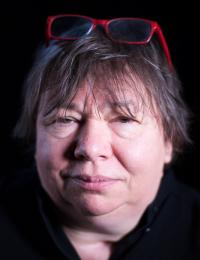I like variety and I learned to listen
Libuše Jarcovjáková was born in 1952 in Prague into an artistic family. Apart from her parents as a teenager she was mostly influenced by her mother‘s friend, the designer Ester Krumbachová. Due to her family background she graduated from a graphic arts school and only following repeated attempts in the mid-1970s was she admitted to Prague‘s Film Academy to study photography. In the meantime she worked for several years as a manual laborer in the Svoboda printing house where she also began experimenting with photography. She built on this experience during her school work which defied the then-mainstream. She photographed minorities such as Prague‘s Roma families, Vietnamese workers and later the homosexual community which also helped her clarify her own sexual identity. In the mid-80s she spent a short time in Japan after which she immigrated to West Berlin where she lived and took photos up until the Velvet Revolution. Then she returned to Czechoslovakia, living and working in Prague ever since.

